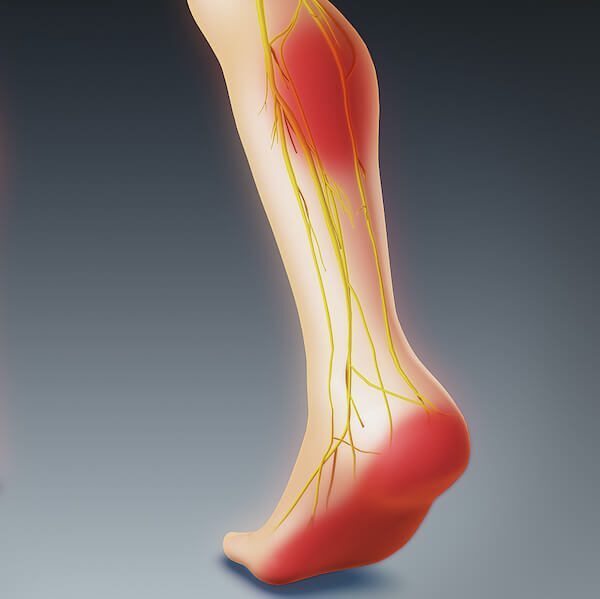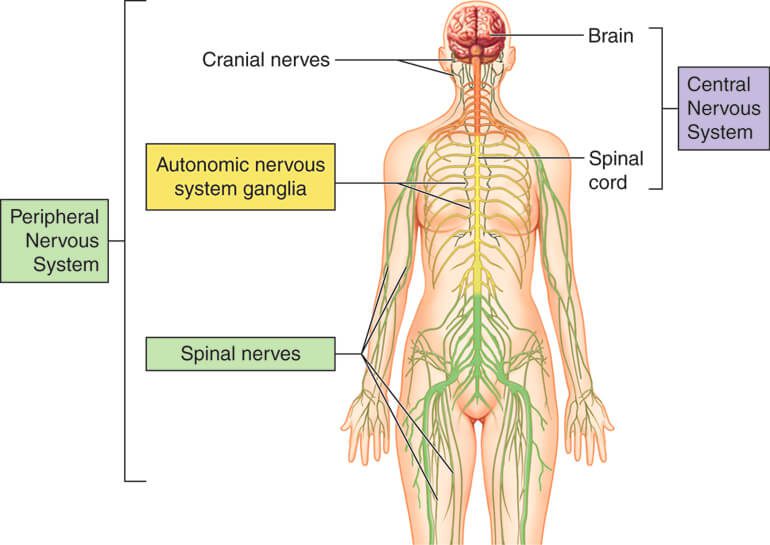SCIATICA AND CIRCULATION
Sciatica is a condition that affects millions of people worldwide. It is a type of pain that radiates along the sciatic nerve, which runs from the lower back down to the legs. In this blog post, we will discuss whether sciatica can cause poor circulation, how it affects day-to-day activities, and what people can do to minimise its negative impact.
A question we are frequently asked is Can Sciatica Cause Poor Circulation, but before answer this we have to first understand the impact of this condition on the sciatic nerve and the role of the sciatic nerve in the human body.
What is Sciatica?
Sciatica is a common medical condition that affects millions of people worldwide. It is a type of pain that radiates along the sciatic nerve, which runs from the lower back down to the legs. The sciatic nerve is the longest nerve in the human body, and it is made up of five nerve roots that exit the spinal cord at the lower lumbar and sacral levels.
The role of nerves in the nervous system is to transmit information between the brain and the rest of the body. The nervous system is divided into two parts: the central nervous system (CNS) and the peripheral nervous system (PNS). The CNS consists of the brain and spinal cord, while the PNS consists of all the nerves that extend beyond the spinal cord.

The sciatic nerve is part of the PNS and is responsible for transmitting sensory and motor information between the lower extremities and the CNS. The sensory fibers of the sciatic nerve transmit information about pain, temperature, and touch from the skin and muscles of the lower extremities to the CNS. The motor fibers of the sciatic nerve transmit motor signals from the CNS to the muscles of the lower extremities, allowing for movement and function.
When the sciatic nerve is compressed or irritated, it can lead to the symptoms of sciatica. The most common causes of sciatica include a herniated disc, spinal stenosis, and degenerative disc disease. These conditions can put pressure on the sciatic nerve, leading to inflammation and pain.
FURTHER READING & RESEARCH
THE PERIPHERAL NERVOUS SYSTEM (PNS)
The peripheral nervous system (PNS) is a complex network of nerves that extends throughout the body, connecting the central nervous system (CNS) to the rest of the body. It is a critical component of the nervous system, responsible for transmitting information between the CNS and various organs, tissues, and systems throughout the body.
The PNS is divided into two primary components: the somatic nervous system (SNS) and the autonomic nervous system (ANS). The SNS is responsible for controlling voluntary movements and sensory input, while the ANS controls involuntary functions such as breathing, heart rate, and digestion.
The SNS is composed of motor and sensory nerves that transmit signals to and from the skin, muscles, and joints. These nerves allow for the conscious control of movement and sensation, such as picking up an object or feeling a touch.
The ANS is further divided into the sympathetic and parasympathetic nervous systems. The sympathetic nervous system is responsible for the "fight or flight" response, which is activated during times of stress or danger. It prepares the body for physical activity by increasing heart rate, dilating blood vessels, and mobilizing energy stores.

The parasympathetic nervous system, on the other hand, is responsible for the "rest and digest" response, which is activated during periods of rest and relaxation. It slows down heart rate, constricts blood vessels, and promotes digestion and other restorative processes.
The PNS is also responsible for other important functions, such as the transmission of pain and temperature sensations, and the control of involuntary reflexes such as the knee-jerk reflex. Additionally, the PNS includes special sensory nerves that transmit information about vision, hearing, smell, and taste.
The Central Nervous System (CNS)
The central nervous system (CNS) is one of the two main components of the nervous system, the other being the peripheral nervous system (PNS). The CNS consists of the brain and spinal cord, which are responsible for processing and integrating information from the PNS and coordinating all bodily functions.
The brain is the control center of the CNS, responsible for processing sensory information, initiating voluntary and involuntary movements, and regulating various bodily functions such as heart rate, respiration, and digestion. It is divided into various regions, each with its own specific functions, such as the cerebrum, which is responsible for conscious thought and movement, and the cerebellum, which coordinates muscle movements and balance.
The spinal cord, on the other hand, is responsible for transmitting sensory and motor information between the brain and the rest of the body. It is protected by the vertebrae of the spinal column and is divided into segments, each corresponding to a specific region of the body. Nerves from the PNS enter and exit the spinal cord at these segments, allowing for the transmission of sensory and motor information.
Together, the brain and spinal cord work in concert to process and integrate sensory information from the PNS, initiate appropriate responses, and maintain homeostasis throughout the body. Disorders of the CNS can have profound effects on a person's quality of life, and can range from relatively minor conditions such as headaches and migraines, to more serious conditions such as epilepsy, multiple sclerosis, and Parkinson's disease.
MEET OUR ORTHOPEDIC & PHYSIOTHERAPY TEAM
Sorry, we couldn't find any posts. Please try a different search.
LIVING WITH SCIATICA
One of the most common ways in which sciatica affects day-to-day activities is by impairing motion. The pain and numbness associated with sciatica can make it difficult for individuals to move their legs and feet, and can cause them to experience weakness or instability when standing or walking. This can lead to difficulties with balance and coordination, and may increase the risk of falls or other injuries.
When it comes to driving, sciatica can also be a major hindrance. Individuals with sciatica may find it difficult to sit for extended periods of time, especially if the pain is concentrated in the lower back or buttocks. This can make it uncomfortable or even impossible to drive a car for any significant length of time. Additionally, the numbness and tingling associated with sciatica can impair sensation in the feet and legs, which can make it more difficult to operate the pedals and maintain control of the vehicle.
HOW DOES SCIATICA IMPACT THE BODY'S CIRCULATION SYSTEM
As we have seen, Sciatica is a condition that has several negative effects on the body. When it comes to the circulation system it is important to note that the sciatic nerve runs from the lower back through the buttocks to the legs, and thus the legs and feet are the principal areas in which circulation could be impaired. The nerve can be compressed or impinged, which can lead to pain, numbness, and tingling in the affected area, and can also cause changes in the way blood flows through the body. Some people even experience migraines as a result of Sciatica, click here to discover the options for treating migraines.
A potential result of Sciatica can be vasoconstriction, or narrowing of the blood vessels. This can occur as a result of the pain and inflammation associated with the condition, which can trigger the release of certain chemicals that cause the blood vessels to constrict. Vasoconstriction can lead to a decrease in blood flow to the affected area, which can exacerbate the symptoms of sciatica and lead to further tissue damage.
Sciatica can also impact circulation by affecting the autonomic nervous system, which plays a key role in regulating blood flow and blood pressure. The autonomic nervous system is responsible for controlling the dilation and constriction of blood vessels, as well as the rate and force of the heartbeat. When the sciatic nerve is compressed or irritated, it can disrupt the normal functioning of the autonomic nervous system, leading to changes in blood flow and blood pressure.
Sciatica can also impact circulation by affecting the lymphatic system, which is responsible for removing waste products and excess fluids from the body. When the sciatic nerve is compressed, it can lead to a buildup of fluid in the affected area, which can impair lymphatic drainage and lead to further inflammation and tissue damage.
It is crucial to note that Sciatica can have a significant impact on the body's circulation system, leading to changes in blood flow, blood pressure, and lymphatic drainage. These changes can exacerbate the symptoms of the condition and lead to further tissue damage if left untreated. It is important for individuals experiencing symptoms of sciatica to seek medical attention in order to determine the underlying cause and develop an appropriate treatment plan.
TREATING SCIATICA
The treatment of sciatica usually depends on the underlying cause of the condition. An Orthopedic hospital in Dubai or qualified physiotherapist can provide a variety of treatment options for patients with sciatica, either alone or in combination, depending on the severity of the condition and the patient's individual needs.
Orthopedic surgeons may recommend surgical interventions, such as a discectomy or laminectomy, in cases where the sciatic nerve compression is caused by a herniated disc or spinal stenosis. A discectomy involves removing a portion of the herniated disc that is compressing the sciatic nerve, while a laminectomy involves removing a portion of the bony arches of the vertebrae to relieve pressure on the nerve.
On the other hand, physiotherapists may suggest non-surgical approaches, such as exercise therapy, manual therapy, or modalities, like electrotherapy or ultrasound, depending on the severity of the condition. Exercise therapy can help improve range of motion, strength, and flexibility, while manual therapy can help reduce pain and increase mobility. Modalities like electrotherapy and ultrasound can help reduce inflammation and pain.
Medical research has shown that both surgical and non-surgical interventions can be effective in treating sciatica. A systematic review and meta-analysis published in the Journal of Neurosurgery: Spine found that surgical interventions can provide faster pain relief and improved functional outcomes compared to non-surgical interventions. However, non-surgical interventions can also provide significant improvements in pain and disability, and may be preferred in patients who are not surgical candidates or who wish to avoid surgery.
